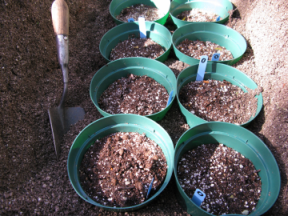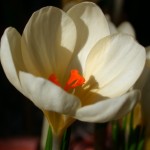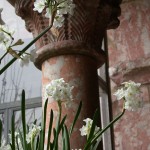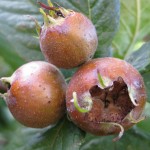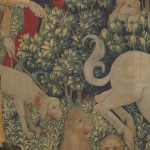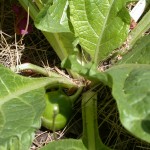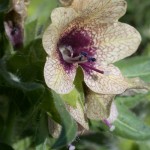Forced Bulbs: Beauty Out of Season
Above, from left to right: Forced bulbs in coldframes at The Cloisters; Crocus chrysanthus ‘Cream Beauty’; Narcissus tazetta ‘Inbal,’ (paperwhites) in Cuxa Cloister.
Every year, by the time February approaches I have the winter doldrums and the beauty of spring is long forgotten. The days become shorter, darker, and extremely colder. It is at this time that my senses need to be reminded why I ever decided to become a gardener. Forced spring bulbs during the winter months provide that reminder wonderfully. Just when I think there is no possible way to endure another day of winter, the first pot of forced paperwhites, Narcissus tazetta, is unveiled at The Cloisters.

